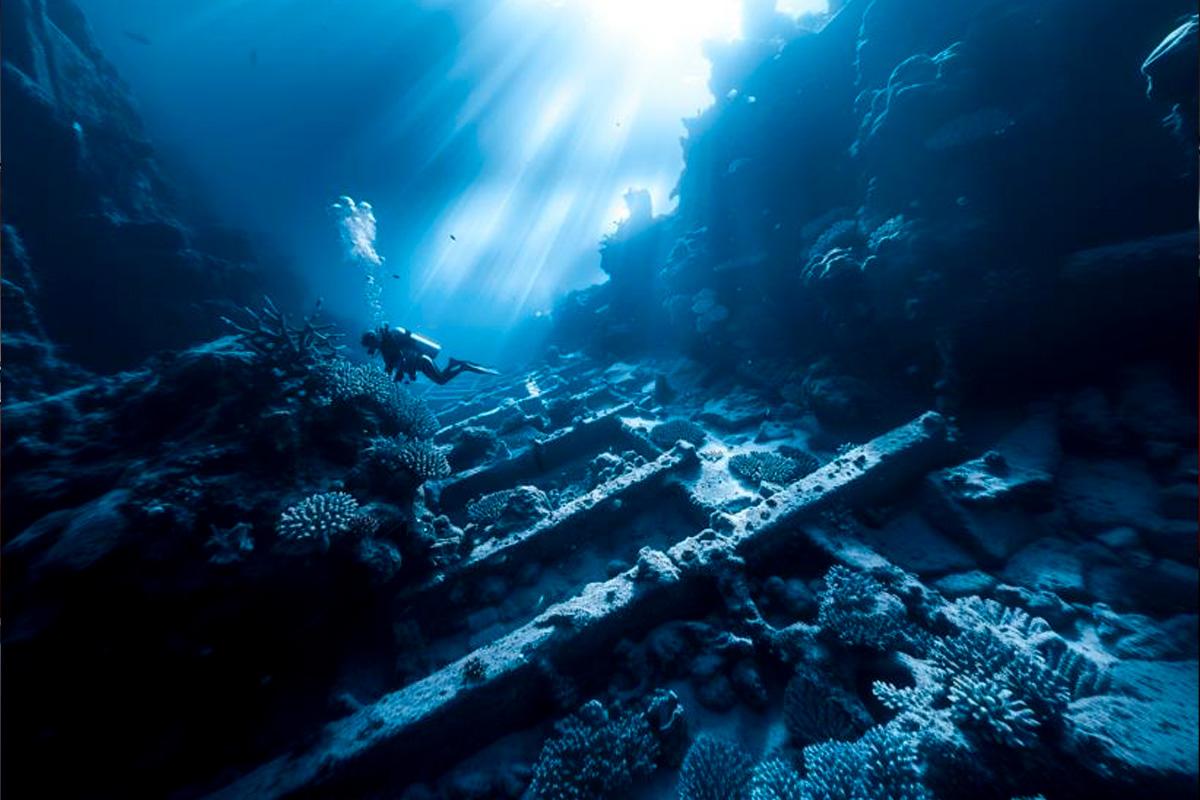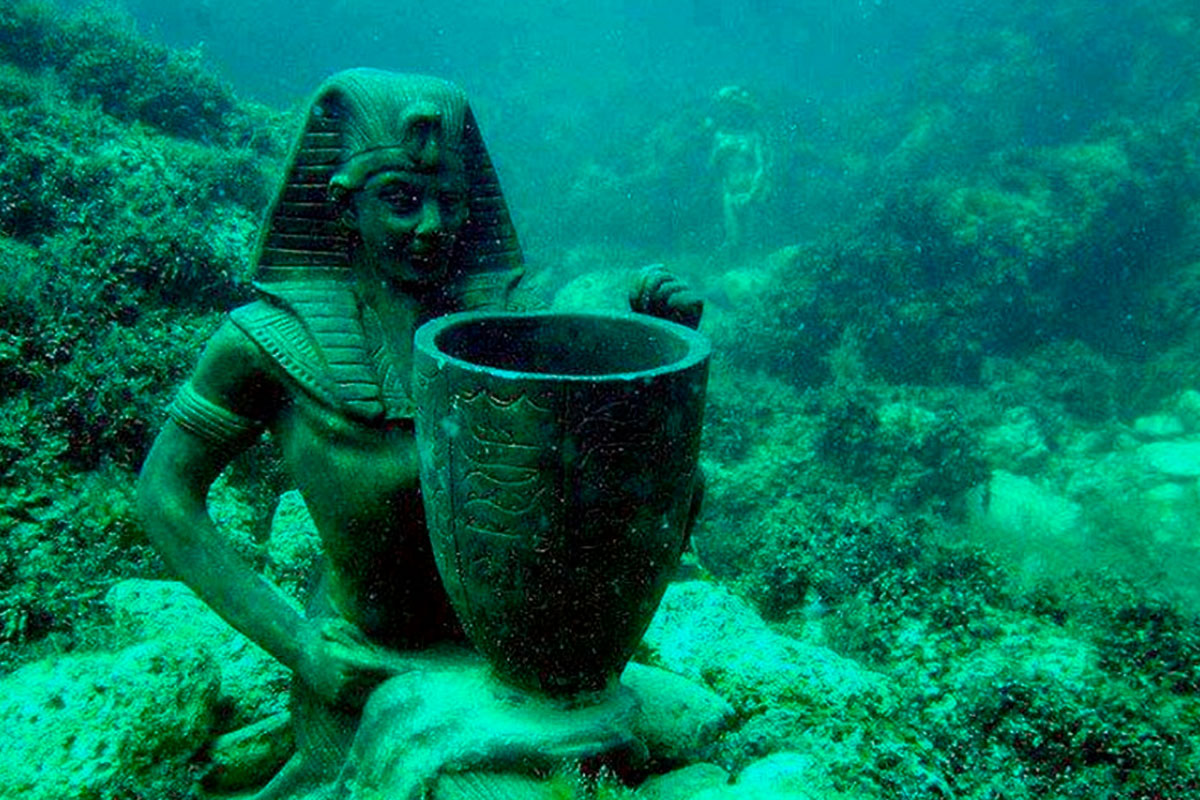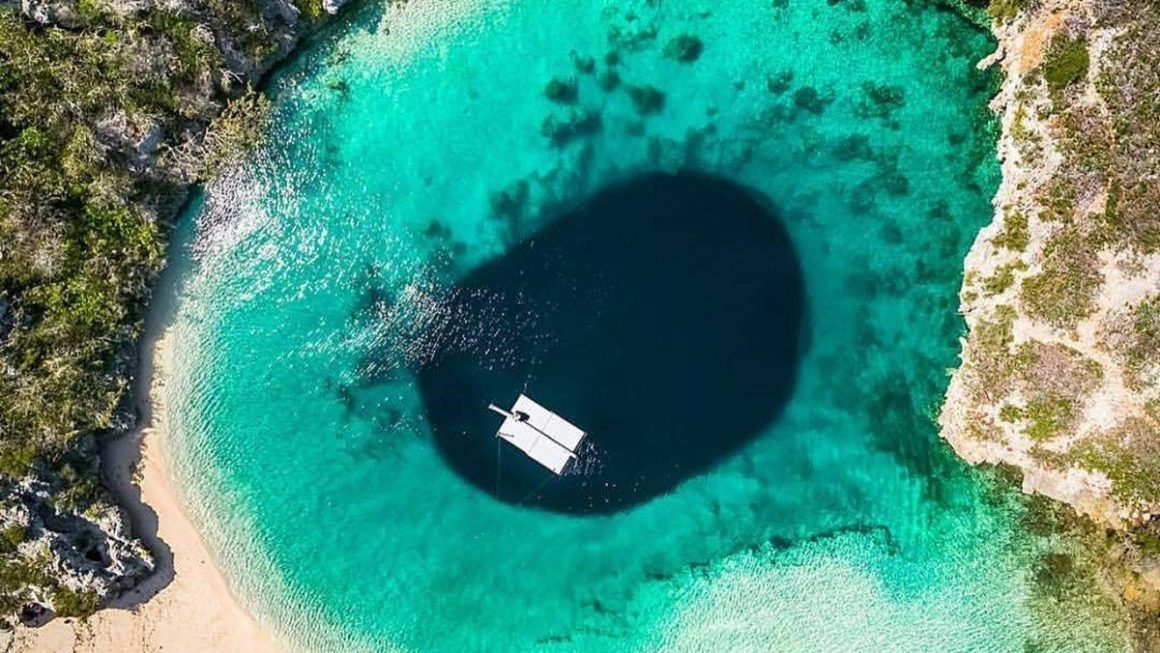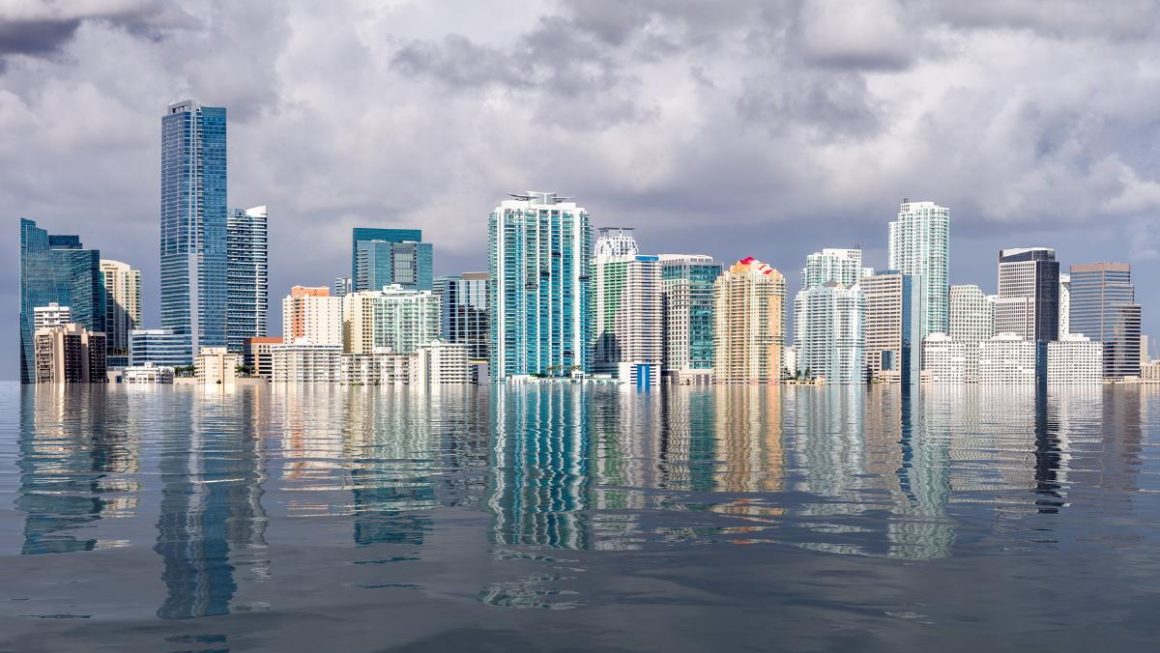What if an advanced civilisation, capable of building cities, existed long before what we are told in books?
This is the question that has been tormenting scientists and archaeologists since 2001, when a team of explorers stumbled upon the impossible in the depths of the Caribbean Sea: the silhouettes of a lost metropolis in a place where, according to science, there should be nothing.
The story began off the coast of the Guanahacabibes peninsula, at the western tip of Cuba. Marine engineer Paulina Zelitsky and her husband, Paul Weinzweig, owners of the Canadian company Advanced Digital Communications (ADC), were scanning the seabed with side-scan sonar. Their mission was to search for treasures from sunken Spanish ships. But what their team recorded on the screens at a depth of almost 700 metres were not galleons, but something much more puzzling.
What was surprising was not the remains of sunken ships, but the precise geometric shapes and alignments that appeared on the seabed, similar to streets and urban structures. This finding raises questions about the existence of unknown advanced civilisations and has since fuelled debates about history, archaeology and the limits of what we think we know about our past.
An Urban Landscape in the Depths
The sonar images revealed patterns that defied any simple geological explanation. What they saw appeared to be a city frozen in time, with astonishingly symmetrical features:
- Pyramidal Structures: Several of the formations were large pyramid shapes.
- Geometric Designs: The sonar drew straight lines, 90-degree angles, and circular patterns, suggesting intelligent, planned design.
- Roads and Buildings: The configurations resembled an urban complex, with what appeared to be roads, buildings, and even possible plazas.
The Big Hurdle: An ‘Impossible’ Timeline
This is where the discovery becomes a real challenge for history. For a city to have been on dry land in that location, the sea level would have had to have been 700 metres lower. The last time that happened was during the Ice Age, at least 50,000 years ago, long before humans arrived in America according to accepted theories.
This fact left the scientific community divided:
The Sceptical Explanation: Many geologists argue that these are natural basalt formations. They maintain that the human brain tends to see familiar patterns (a phenomenon called pareidolia) in random structures, and that without physical evidence (rocks extracted and analysed), nothing can be said for certain.
The Revolutionary Hypothesis: Zelitsky and other researchers suggest that it could be evidence of an unknown civilisation, swept away by a natural cataclysm such as the rise of the waters at the end of the ice age. Some even connect it to local legends about an island inhabited by “ancestors” that sank into the sea.
The high cost of an underwater expedition to such depths and the complex political situation have prevented further research. Today, the ‘Atlantis of Cuba’ remains an echo on a sonar monitor, an unsolved mystery that forces us to ask ourselves: do we really know the true chronology of our past?
How was the supposed sunken city under the Caribbean discovered?
In 2001, marine engineers Paulina Zelitsky and Paul Weinzweig, while mapping the seabed near the Guanahacabibes Peninsula (Cuba), detected a series of structures with sonar scanners. According to their interpretation, they looked like pyramids, streets and buildings lying more than 600 metres below the sea surface.
The initial hypothesis suggested that these remains could belong to a civilisation at least 6,000 years old, predating even the pyramids of Egypt. The news spread rapidly in the international media and aroused great interest in the scientific community.
Zelitsky went so far as to declare: ‘It is a truly marvellous structure that appears to have been a large urban centre.’ His description reinforced the idea that these were not simply rocks, but a highly complex human settlement.
And from the outset, interpretations were divided. Some scientists considered the find to be a possible indication of ancient lost civilisations. Other geologists, however, pointed out that the depth of the site made it unlikely that it had sunk just a few millennia ago.
Cuban geologist Manuel Iturralde-Vinent was one of the main critics. He acknowledged the strangeness of the find but warned that there was no conclusive evidence: ‘It’s strange, but we have no explanation.’ For him and other colleagues, ocean currents, tectonic movements and erosion could have created rock formations with an artificial appearance.
The discussion revolved around one central point: for a city to reach a depth of 600 metres, it would take tens of thousands of years of geological sinking, not just six thousand. This time difference contradicts the known framework of human development.
Why was there no further research and what was said internationally?
After the first expedition, no in-depth studies were carried out. The lack of new exploration campaigns left the discovery in scientific limbo.
One of the reasons given was the economic and logistical difficulty of organising advanced underwater missions. Another was doubts about the veracity of the discovery.
Even so, the hypothesis of a submerged city under the Caribbean was compared to other archaeological finds that at the time challenged the official chronology. Göbekli Tepe, in Turkey, surprised with its age and architectural level, dating back thousands of years before the first known urban settlements.
The underwater monument of Yonaguni, in Japan, was also mentioned, a pyramid-shaped structure that some consider to be man-made and others interpret as a natural formation.
These examples fuelled the idea that the Cuban case could be part of a broader pattern of enigmatic enclaves that challenge established history.

Scepticism and persistence of the mystery of this submerged city under the Caribbean
Underwater archaeologist Michael Faught of Florida State University was among those who expressed reservations. ‘It would be fantastic if Zelitsky and Weinzweig were right, but it would be extremely advanced for any known culture in the New World at that time,’ he said.
Prudence has thus marked the most sceptical positions. From this perspective, accepting the existence of a submerged city under the Caribbean without concrete evidence would imply radically modifying accepted historical frameworks.
However, other researchers insist that new technologies, such as high-resolution 3D scanning and unmanned submarines, could provide conclusive data. The problem lies in the lack of funding for such projects, which require high investment and institutional support that has not yet been forthcoming.
More than twenty years later, the discovery of the alleged ruins in Cuba remains unresolved. On social media and specialised forums, the topic has resurfaced periodically, often linked to theories about lost civilisations and even the mythical Atlantis. However, to date, there is no verified evidence to support these claims.




